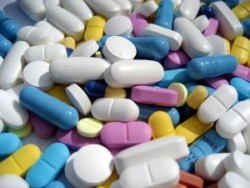The Best Methods of Prescription Drug Detox
As synthetically made compounds, prescription drugs produce powerful effects that gradually interfere with brain and central nervous system functions over time. According to the National Institute on Drug Abuse, when abused, a person can become addicted to prescription drugs just as easily as to illicit drugs like cocaine and heroin.
Once addiction sets in, the damage done to the brain places a person at the mercy of the drug’s effects. For many people, prescription drug detox offers the only viable means for breaking the hold that drugs have over their lives.
With so many different types of drugs on the market, methods of prescription drug detox can vary depending on the type of drug involved. The most commonly abused drug types include:
- Opiates
- Benzodiazepines
- Stimulants

Stimulant-related prescription drug detox require medication therapy approaches.
Overall, the best methods of prescription drug detox work to relieve uncomfortable withdrawal effects while maintaining the overall safety of the patient throughout the detox period. To accomplish this, prescription drug detox programs use medication-assisted detox methods as a means for strengthening damaged brain functions.
Prescription Drug Abuse Effects
Both illicit and prescription drugs produce psychoactive effects that alter neurotransmitter levels in the brain. Psychoactive effects play a central role in driving drug abuse practices.
Prescription opiate, stimulant and benzodiazepines all produce different types of psychoactive effects:
- Opiates act as depressants, slowing down brain chemical processes
- Benzodiazepines also have depressant effects
- Stimulants speed up brain chemical processes
These effects not only interfere with brain function, but also disrupt any bodily functions regulated by the central nervous system. Medications used in prescription drug detox methods address the brain chemical processes most affected by any one drug type.
Medication-Assisted Treatments Used in Prescription Drug Detox
Opiates
Medications used to treat opiate-based addictions work to wean the body off the effects of addictive drugs, according to the Mayo Clinic. In the process, addicts gain considerable relief from withdrawal and drug craving effects.
Medication therapies commonly used for opiate-related prescription drug detox include:
- Methadone
- Subutex
- Suboxone
Clonidine, another commonly used opiate addiction treatment, does not produce opiate-like effects, nor is it an opiate-based drug. According to the National Center for Biotechnology Information, clonidine helps to lessen the severity of symptoms experienced in prescription drug detox without producing psychoactive effects.
Benzodiazepine Detox
Prescription drug detox methods used in benzodiazepine addiction treatment can vary depending on the severity of the addiction. For mild to moderate addictions, detox programs may employ a tapering method designed to wean a person off the drug by gradually reducing dosage amounts over time.
In cases of severe addiction, doctors may switch a person to a different benzodiazepine drug as symptoms of extreme panic and anxiety can develop during the detox stage.
Stimulant Detox
Unlike the medication therapies used in opiate and benzodiazepine addiction treatment, no known medication treatments exist for use in stimulant-related prescription drug detox. Rather than rely on medication therapy approaches, detox programs focus on helping addicts abstain from further drug use by addressing the underlying behavioral components that drive addiction.


 Vicoprofen Detox Centers -
A professional detox center will help relieve Vicoprofen withdrawal symptoms by utilizing a combination of medication treatment and behavioral therapies.
Vicoprofen Detox Centers -
A professional detox center will help relieve Vicoprofen withdrawal symptoms by utilizing a combination of medication treatment and behavioral therapies.  Soma Detox Centers -
Soma withdrawal can be dangerous, making it imperative that detox take place in a medical setting.
Soma Detox Centers -
Soma withdrawal can be dangerous, making it imperative that detox take place in a medical setting.  OxyContin Detox Centers -
With the use of medications and therapy, OxyContin detox centers are able to alleviate withdrawal symptoms and reduce the risk of relapse.
OxyContin Detox Centers -
With the use of medications and therapy, OxyContin detox centers are able to alleviate withdrawal symptoms and reduce the risk of relapse.  Adderall Detox Centers -
The safest, most effective way to detox from Adderall is through a professional center that provides comprehensive treatment.
Adderall Detox Centers -
The safest, most effective way to detox from Adderall is through a professional center that provides comprehensive treatment.  Suboxone Detox -
People who suffer from opiate addiction such as an addiction to heroin or prescription painkillers can often find relief in Suboxone detox. This method of detox involves providing the patient with a medication that will help him or her to overcome cravings and reduce or completely eliminate withdrawal symptoms during the most difficult phases of ...
Suboxone Detox -
People who suffer from opiate addiction such as an addiction to heroin or prescription painkillers can often find relief in Suboxone detox. This method of detox involves providing the patient with a medication that will help him or her to overcome cravings and reduce or completely eliminate withdrawal symptoms during the most difficult phases of ...